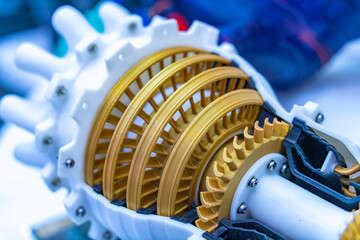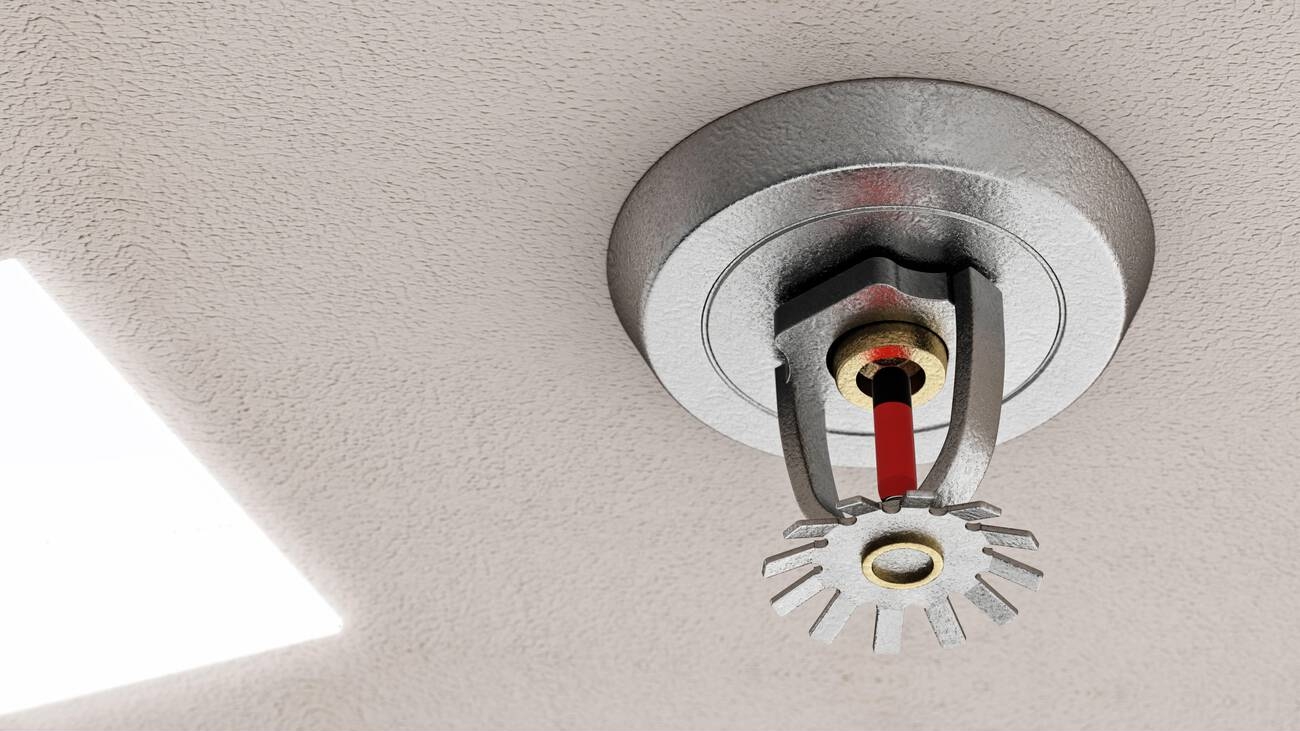As you read this post, you’ll discover how companies like Rolls Royce, Airbus, and Boeing are utilizing this cutting-edge technology to create intricate and lightweight aircraft components.
With 3D printing, they can produce resilient parts that reduce air-drag, fuel consumption, and emissions. Plus, we’ll delve into the benefits of eliminating expensive tooling changes and explore how 3D printing is shaping the future of aviation manufacturing. Exciting stuff awaits!
Advancements in 3D Printing Technology
Advancements in 3D printing technology have revolutionized the aerospace industry, allowing for the production of intricate and lightweight 3D printing aerospace parts parts. Additive manufacturing for aerospace has made significant progress, enabling the creation of complex components that were previously difficult to manufacture. The use of 3D printing in aviation has become increasingly common, as it offers numerous advantages over traditional manufacturing methods.
One major advancement in 3D printing in aviation is the ability to print aircraft parts directly from digital designs. This eliminates the need for expensive tooling settings and reduces production time and costs. Additionally, additive manufacturing allows for the production of short runs of intricate and large-scale 3d printing aircraft parts that are both lightweight and resilient.
In terms of materials, advancements in 3D printing have led to the development of new alloys and composites specifically designed for aerospace applications. These materials offer improved strength-to-weight ratios, making them ideal for reducing aircraft weight and improving fuel efficiency.
Furthermore, 3D printing technology enables the integration of multiple smaller parts into a single component, streamlining production processes and reducing waste. This consolidation not only saves on material costs but also simplifies assembly and maintenance procedures.
Production Benefits of 3D Printing
You can experience cost savings and improved efficiency in the production of aircraft parts through 3D printing. Additive manufacturing, also known as 3D printing, offers numerous benefits for the aerospace industry. By utilizing this technology, manufacturers can produce complex and intricate parts with ease. Traditional manufacturing methods often involve laborious processes and expensive tooling changes, whereas 3D printing allows for flexibility and on-demand production without the need for costly tooling settings.
The production benefits of 3D printing in the aerospace industry are significant. It enables the creation of short runs of intricate and large-scale aircraft parts, resulting in reduced costs compared to traditional manufacturing methods. Moreover, with 3D printer aerospace parts are lightweight yet resilient, providing a weight reduction that impacts fuel efficiency and overall 3D printed aircraft performance. This technology also introduces new efficiencies in the manufacturing process by streamlining production processes and reducing waste.
Examples of applications of where 3D printing is used in aerospace include air ducts, wall panels, seat frameworks, engine components, and more. Companies like Airbus have already incorporated thousands of 3D printed parts into their airplane 3D printing, resulting in considerable weight reduction.
Overall, incorporating 3D printing into aerospace production yields substantial benefits such as cost savings, improved efficiency, weight reduction, fuel efficiency improvements,and enhanced aircraft performance. The advancements made possible by this technology continue to shape the future of aviation manufacturing as it becomes an industry norm due to its consistency,reliability,and customization capabilities
Weight Reduction and Fuel Efficiency With 3D Components
By utilizing 3D components, you can achieve significant weight reduction and improve fuel efficiency in the aviation industry. 3D printing technology offers numerous advantages for aerospace manufacturing, including the ability to create lightweight and resilient parts compared to traditional manufacturing methods. These lighter parts reduce aircraft weight and air-drag, resulting in reduced fuel consumption and improved overall fuel efficiency. The weight of an aircraft directly affects its cruising altitude and fuel consumption, making weight reduction a critical factor for improving performance.
Incorporating 3D printing allows for the use of carbon fiber materials and shape memory alloys that further contribute to reducing weight while maintaining strength and durability. Additionally, 3D printing enables greater efficiency in construction by consolidating multiple smaller parts into a single component, reducing the need for high-cost tooling settings. This streamlined production process not only saves time but also reduces waste.
Overall, the integration of 3D printing in aerospace design and production has revolutionized the industry by providing customizable solutions, reducing costs, enhancing aircraft performance, and ensuring competitiveness. As more companies embrace this technology, we can expect to see continued advancements in weight reduction and fuel efficiency within the aviation sector.
Eliminating Expensive Tooling Changes
Utilizing 3D printing technology eliminates the need for costly tooling changes in the production process of aircraft components. This revolutionary manufacturing technique offers numerous benefits to the aerospace industry, making it a game-changer in the field.
Here are some key advantages:
Increased cost-efficiency
With 3D printing, manufacturers can produce parts without the need for expensive tooling changes. This not only reduces production costs but also allows for on-demand production of modified parts and upgrades. Complex and lightweight structures can be printed, streamlining production processes and reducing waste.
Enhanced design flexibility
3D printing enables the consolidation of multiple smaller parts into a single component, improving efficiency in construction. Moreover, this technology opens doors to customization capacity for interiors and functional parts, providing designers with greater flexibility in creating innovative solutions.
In aeronautical applications specifically, 3D printing is being used extensively:
Airplane components
Major aviation companies like Airbus and Boeing have incorporated thousands of 3D printed parts in their airplanes. These parts are considerably lighter than traditional metal components, resulting in reduced weight that impacts payload, fuel consumption, emissions, and speed.
Engine components
The aerospace industry has witnessed successful test flights using 3D printed engine components. Companies like Rolls Royce have collaborated with universities to develop large-scale engine parts using electron beam melting (EBM) technology.
The integration of 3D printing into aerospace design and production processes is transforming the industry by improving efficiency while reducing costs. As more companies embrace this technology’s consistency and reliability, it is becoming an industry norm that will shape the future of aviation manufacturing.
Integration of 3D Printing in Aerospace Design, Production, and Future Development
Incorporating 3D printing services at key stages speeds up processes and provides clarity for designers and manufacturers in the aerospace field. Aerospace 3D printing, also known as additive manufacturing, has revolutionized the industry by offering new possibilities in design, production, and future development. With the use of advanced technologies like selective laser sintering (SLS aerospace), aerospace companies can now create intricate and customized components with high precision.
The integration of 3D printing in aerospace design allows for rapid prototyping and conceptual modeling, enabling faster iteration cycles and reducing time to market. It also offers the capacity for on-demand manufacture of components, eliminating the need for extensive inventory management. This flexibility is particularly valuable in an industry that faces uncertainties and changes.
Moreover, 3D printed parts are becoming the industry norm due to their consistency and reliability. They offer lightweight alternatives to traditionally manufactured parts without compromising strength or durability. By reducing weight through the use of carbon fiber materials and shape memory alloys, aircraft performance is significantly enhanced. This weight reduction not only impacts fuel consumption but also affects payload capacity, emissions, speed, and cruising altitude.
Overall, incorporating 3D printing at key stages in aerospace design and production processes improves efficiency while providing clarity to both designers and manufacturers. As this technology continues to evolve, it will undoubtedly play a crucial role in shaping the future of aviation by offering innovative solutions that drive advancements in aircraft performance and manufacturing capabilities.
Benefits of 3D Printing in Aviation
3D printed parts are considerably lighter, reducing the weight of planes and impacting payload, fuel consumption, emissions, and speed. This weight reduction has several significant benefits:
- Enhanced Payload Capacity
- Increased capacity to carry more passengers or cargo
- Improved efficiency in transporting goods and people
- Reduced Fuel Consumption
- Lower fuel requirements due to decreased aircraft weight
- Improved cost-effectiveness for airlines and reduced environmental impact.
These advantages evoke a sense of excitement and optimism in the audience. The ability to carry more passengers or cargo while minimizing fuel consumption creates opportunities for economic growth and sustainability. Additionally, the reduced weight contributes to faster speeds, allowing for quicker travel times. This not only enhances convenience but also improves overall productivity.
Moreover, the positive environmental impact cannot be overlooked. By reducing fuel consumption and emissions, 3D printing in aviation plays a crucial role in mitigating climate change and promoting greener practices within the industry. The innovation brought about by lightweight components is not only revolutionizing aircraft design but also driving progress towards a more sustainable future.
Overall, the utilization of 3D printing technology in aviation offers immense potential for transforming the industry by improving efficiency, reducing costs, and enhancing performance. With its ability to create lighter components that have a profound impact on various aspects of airplane operations, it is clear that 3D printing will continue to shape the future of aviation manufacturing.
Aviation Companies Using 3D Printing
In the previous subtopic, you learned about the benefits of 3D printing in aviation, such as reduced time to create plane parts and the considerable weight reduction of 3D printed components. Now, let’s delve into how aviation companies are utilizing 3D printing technology.
Major players in the aviation industry have embraced 3D printing as a means to enhance their manufacturing processes. Airbus, for example, has incorporated approximately a thousand 3D printed parts in their airplanes. Some of these parts weigh up to a third less than traditional metal components, contributing to significant weight reduction and improved fuel efficiency.
Boeing is another prominent company that has already utilized 3D printing to manufacture over 60,000 parts. The Dreamliner 737 showcases this technology with its use of 30 3D printed components, and there is potential for more in the future.
Etihad Airways is also exploring the feasibility of using 3D printing for every part inside the cabin. Their Innovation Centre in Abu Dhabi focuses on reimagining non-flying parts through cutting-edge design and manufacturing processes.
These 3D printing applications examples highlight how aviation companies are leveraging 3D printing to improve aircraft performance by reducing weight, increasing efficiency, and enhancing noise reduction. With further advancements in additive manufacturing technology and increased adoption rates within the aerospace industry, we can expect even greater utilization of this game-changing innovation.
Impact on Additive Manufacturing Sector
Did you know that the impact of 3D printing is significant in the additive manufacturing sector, with aerospace companies investing in this technology due to its benefits in weight reduction, efficiency improvement, and noise reduction? The adoption of 3D printing in the aerospace industry has brought about several positive changes. Here are some key points to consider:
Benefits of 3D Printing
Weight Reduction
3D printed components are considerably lighter than traditionally manufactured ones. This reduces overall aircraft weight, leading to improved fuel efficiency and reduced emissions.
Efficiency Improvement
Additive manufacturing enables the production of intricate and large-scale aircraft parts with greater efficiency. It eliminates the need for high-cost tooling settings and streamlines production processes.
Customization Capacity
With 3D printing, customization becomes easier for interiors and functional parts, providing flexibility in design and enhancing aircraft performance.
Noise Reduction
By utilizing lightweight materials like carbon fiber and shape memory alloys, 3D printed parts contribute to noise reduction during flight.
The impact on additive manufacturing sector
- Aerospace accounts for roughly 20% of the additive manufacturing market. Companies like Honeywell have received FAA approval for numerous 3D printed components, reducing both time and parts needed to build plane sections.
- Future Competitiveness: Incorporating advanced design and manufacturing techniques using 3D printing in industry ensures competitiveness within the aviation industry.
These advancements demonstrate how 3D printing planes is revolutionizing aerospace manufacturing by improving efficiency, reducing costs, enhancing performance, and paving the way for a more sustainable future.



